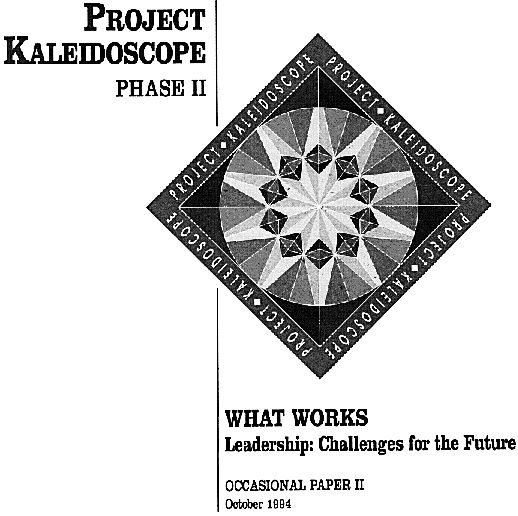

George Lisensky, Laura Parmentier, and Brock Spencer
Chemistry Department-Beloit College
What works for introductory chemistry students at Beloit College is a new
course that trades lectures and examinations for more time in the laboratory.
Lots of hands-on laboratory experience, students and faculty working together
to discover important chemical concepts, and projects that tie chemistry
to everyday experience have proved to be effective in catching and holding
student interest. Both students who continue in science and those who do
not come away from the course with a better understanding of how science
progresses and contributes to society.
Structure and Properties of Materials, a one-semester introductory chemistry
course for both science majors and non-majors, starts each new topic with
an exploratory laboratory investigation. Students work collaboratively to
get data for class interpretation, then chemical concepts emerge from class
discussion before students apply them to new situations or to questions
they have posed themselves. Instead of being a collection of unrelated topics,
the course has a theme: properties of everyday materials and a molecular
explanation of their behavior. As a result, the textbook has become a resource
to help answer questions rather than a blueprint for the course, and lectures
have given way to discussion about points that students find interesting
or difficult. Instead of mid-terms and final exams, students complete week-long
laboratory projects and write formal reports for them, or answer a short
"question of the day" that emphasizes explaining the conceptual
basis for observations rather than duplicating end-of-chapter problems.
With this approach, which emphasizes science as investigation and provides
more hands-on experience, students spend their time designing and carrying
out a study of the environmental sources of lead in soil rather than memorizing
rules for balancing oxidation-reduction reactions or for calculating the
pH of a buffer solution. They understand that science is driven by both
the usefulness of what it produces and the desire to understand how and
why. Although some traditional topics are skipped because they are extraneous
to the questions being asked, the experience gained from completing 30 labs
in the first semester shows up in advanced courses as students come better
prepared to ask scientific questions and devise ways to answer them . As
one well-prepared student explained it, "We covered more topics in
my high school chemistry class, but I understood more in this one."
Following the NSF-funded Project Kaleidoscope National Colloquium on what
works in undergraduate science education, held at the National Academy of
Sciences in February 1991, Professors George Lisensky, Laura Parmentier,
and Brock Spencer decided to experiment with this lab-intensive, investigative,
and collaborative approach to general chemistry. They developed the course
during the Fall of 1991 while each teaching a section of it, using the collaborative
approach they wanted their students to follow. The course continues to evolve
as new laboratory projects are developed for it. It serves as a site for
developing and testing materials for an NSF-funded project to introduce
solid-state concepts and examples into general chemistry courses, a project
that recently published Teaching General Chemistry: A Materials Science
Companion.
With three years of experience, the Beloit chemists find that while the
old format was highly successful for students who became science majors,
the new course continues to serve that audience well but also reaches other
groups of students more effectively. The drop-out rate for those who enroll
in the course has fallen significantly, student satisfaction with the new
format is high, and enrollments in follow-on courses continue to be strong.
The only problem has been to supply enough sections to meet the growing
student demand; almost half of all Beloit College students have taken the
course by the time they graduate.
Nationally, interest in this experimental approach to general chemistry
has been high. Although some faculty are skeptical because students will
not have "covered" as much material, many are attracted by the
emphasis on open-ended investigation, hands-on learning , and creating a
"community of learners" among students and faculty. The course
was recently included among the first group selected by Project Kaleidoscope
as Programs That Work and has been featured in several Project Kaleidoscope
workshops. Elements of this approach are also central to curricular reform
efforts of the ChemLinks Coalition (headquartered at Beloit College), a
group of 15 liberal arts institutions that received a planning grant for
Systemic Change in the Undergraduate Chemistry Curriculum.
Back
